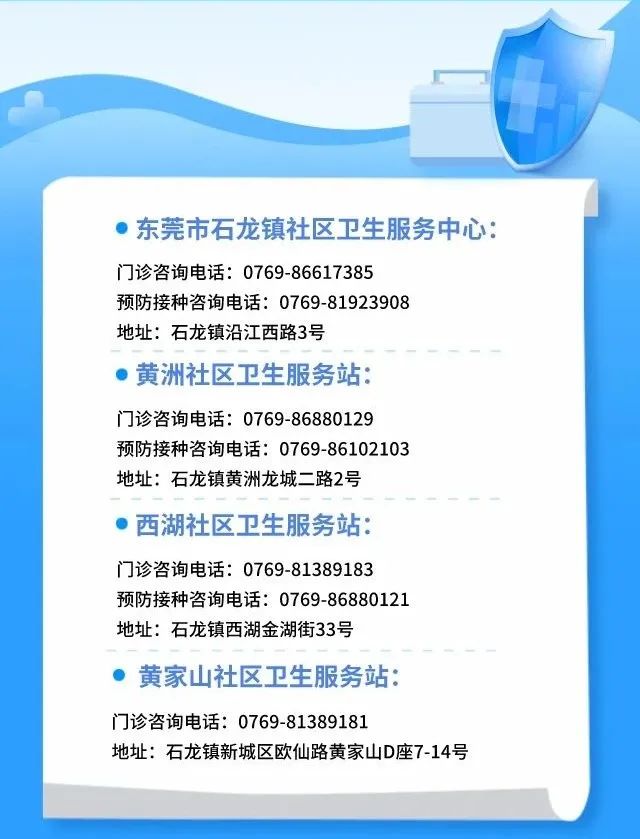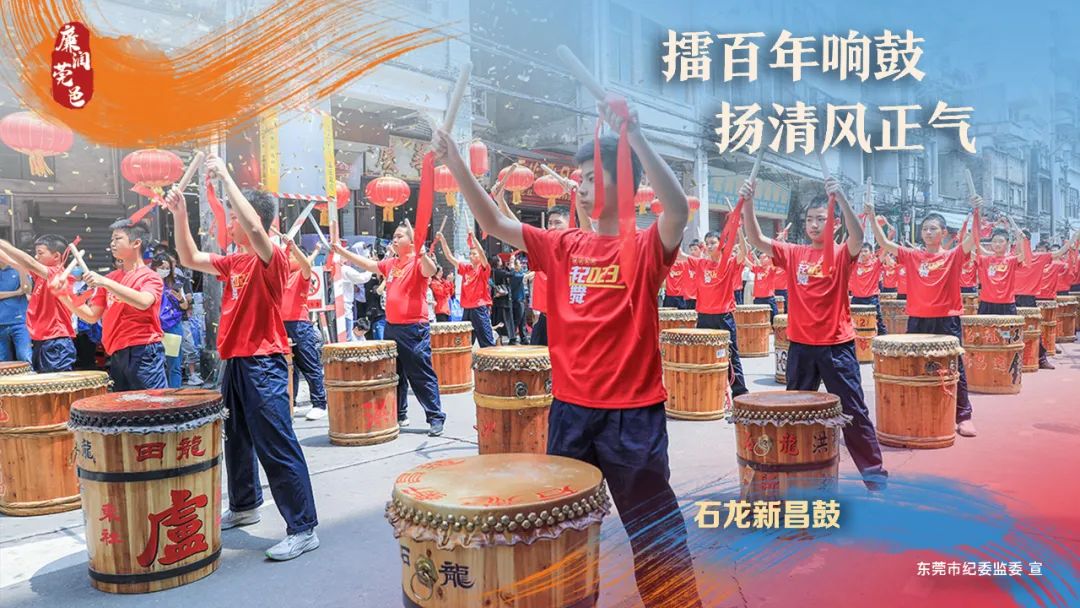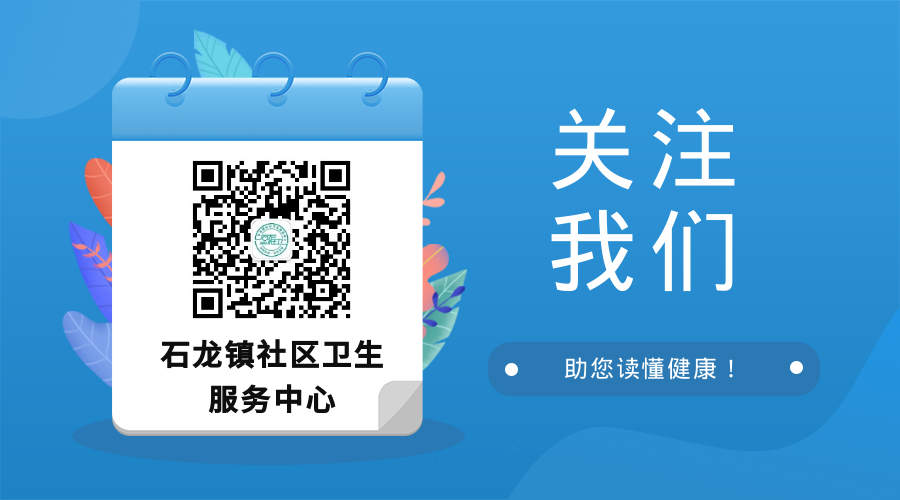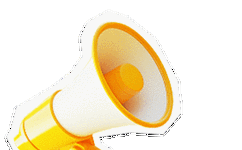What is Pediatric Tuina?
Pediatric Tuina is a traditional Chinese medical therapy widely used in pediatrics. It employs massage techniques on specific acupuncture points to unblock meridians, regulate internal organs, harmonize Qi and blood, and balance Yin and Yang. This method not only aims to prevent diseases but also promotes children’s growth and development, avoiding the physical and psychological harm caused by medications and injections. As early as the Tang Dynasty, Sun Simiao’s “Emergency Formulas Worth a Thousand Gold” recorded that “even if children are not ill, they should be massaged on the head and palms every morning to ward off wind and cold,” detailing various Tuina methods and prescriptions for children’s diseases.
Indications:
Pediatric Tuina is applicable for a wide range of conditions, especially for regulating respiratory and digestive system diseases.
Respiratory-related conditions: colds, coughs, fevers, rhinitis, adenoid hypertrophy, etc.
Digestive-related conditions: constipation, anorexia, vomiting, diarrhea, malnutrition, abdominal pain, etc.
Health maintenance: strengthening the spleen, enhancing intelligence, benefiting the lungs, boosting immunity, etc.
Other conditions: sleep disturbances, night terrors, enuresis, etc.
Applicable Population:
Pediatric Tuina is suitable for children aged 0-14 years, with better effects for those under 6 years old, and even more effective for infants under 3 years old.
Contraindications:
Fractures, traumatic bleeding; skin lesions, skin ulcers; burns, scalds; acute infectious diseases, cancer, and critical illnesses, etc.
Here are some commonly used
Pediatric Health Tuina Techniques
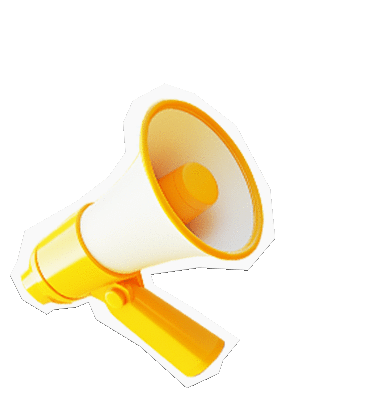
Health Massage for 6 and 12 Months Old
1. Abdominal Massage
(1) Location: Abdomen.
(2) Technique: The practitioner uses the palm or the tips of the index, middle, and ring fingers to apply rhythmic circular movements on the child’s abdomen for 1-3 minutes each time. (Figure 1)
(3) Effect: Improves spleen and stomach function, promotes digestion and absorption.
2. Spinal Pinching
(1) Location: Along the spine, from the large vertebra to the tailbone.
(2) Technique: The practitioner forms a fist with the middle, ring, and little fingers, with the index finger bent and the thumb extended. Starting from the Changqiang (长强) point, the practitioner pinches the skin along the spine alternately with both hands, moving from the lower back to the upper back, repeating 4-6 times based on the child’s condition and constitution. (Figure 2)
(3) Effect: Aids in digestion, strengthens the spleen and stomach, and unblocks meridians.
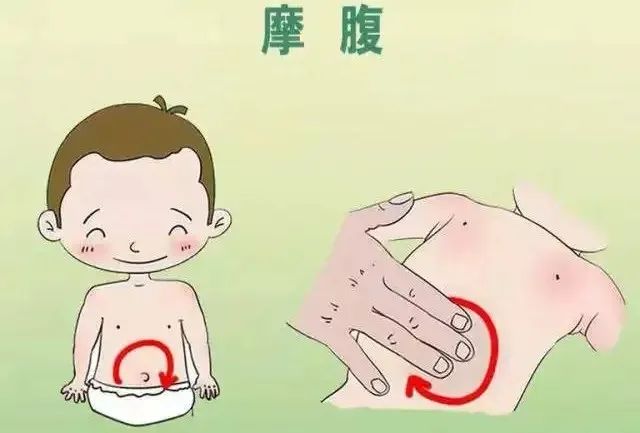 Figure 1
Figure 1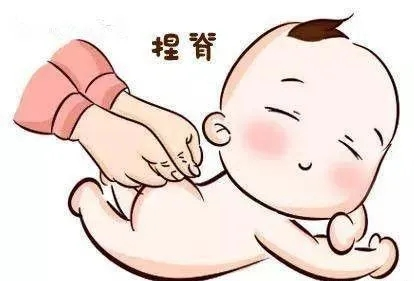 Figure 2
Figure 2
Health Massage for 12 and 18 Months Old
1. Zusanli (足三里) Point
① Location: On the outer side of the lower leg, 3 inches below the knee, one finger breadth from the anterior border of the tibia (Figure 3).
② Technique: The practitioner uses the thumb to press and knead for 1-3 minutes each time.
③ Effect: Strengthens the spleen and stomach, enhances physical constitution.
2. Yingxiang (迎香) Point
① Location: At the midpoint of the outer edge of the nostrils, in the nasolabial groove (Figure 4).
② Technique: The thumbs are placed on the same side of the jaw, with the middle fingers pressing on the Yingxiang points, and the other three fingers bent towards the palm. The middle fingers then perform clockwise kneading at the Yingxiang points for 1-3 minutes each time.
③ Effect: Opens the nasal passages.
 Figure 3
Figure 3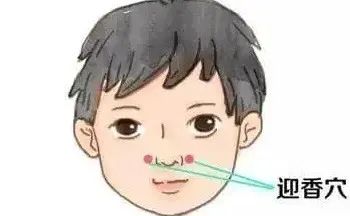 Figure 4
Figure 4
Health Massage for 30 and 36 Months Old
Pressing the Sishencong (四神聪) Points:
① Location: At the top of the head, 1 inch to the left and right of Baihui (百会), totaling 4 points (see Figure 5).
② Technique: Use fingers to press and knead each point, starting with the left and right Sishencong points, then the front and back points, for 1-3 minutes each time.
③ Effect: Awakens the mind and enhances intelligence.
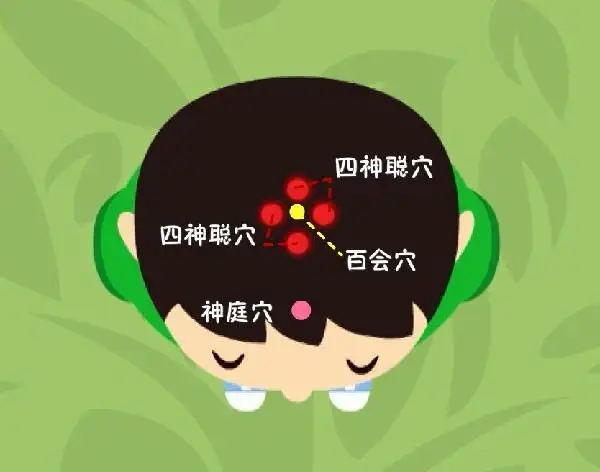
Figure 5
Precautions:
(1) Prepare talcum powder, body powder, or wintergreen ointment as needed.
(2) The practitioner should keep hands clean, with nails trimmed and smooth to prevent scratching the child’s skin during the procedure.
(3) In cold weather, keep hands warm by rubbing them together before performing the massage to avoid startling the child with cold hands.
(4) Techniques should be gentle to encourage cooperation from the child.
(5) Avoid massage on areas with skin lesions or fractures.
Have you mastered these techniques?
Next, the difficulty will increase!
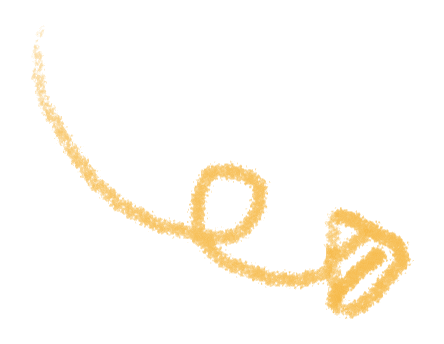
When children have a fever, diarrhea, or cough and asthma… besides injections and medications, what else can be done? In traditional Chinese medicine, there is a very healthy and natural therapy: Pediatric Tuina.
Pediatric Tuina for Preventing External Pathogens in Three Steps
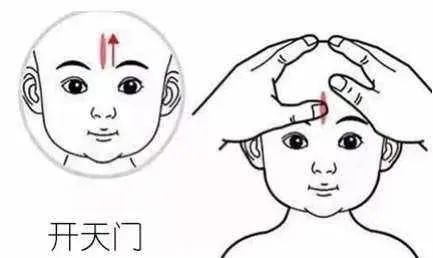 1. Open the Tianmen (天门)
1. Open the Tianmen (天门)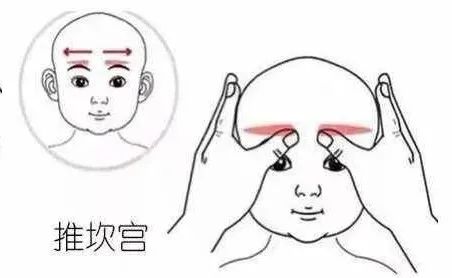 2. Push the Kangong (坎宫)
2. Push the Kangong (坎宫)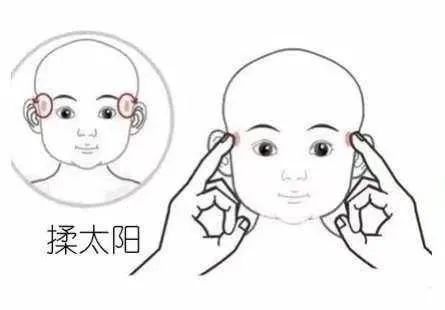 3. Rub the Taiyang (太阳)
3. Rub the Taiyang (太阳)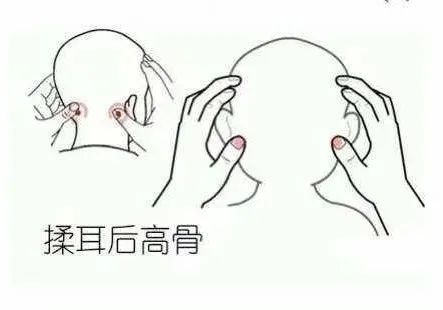 4. Rub the Gaogong behind the ear (耳后高骨)
4. Rub the Gaogong behind the ear (耳后高骨)


Step One – Four Major Techniques for the Head and Face
1. Open the Tianmen: Tianmen is located directly above the midpoint between the eyebrows, extending to the hairline. Technique: Use both thumbs alternately to push from the midpoint between the eyebrows to the hairline for 300 times.
2. Push the Kangong: The horizontal line from the inner corners of the eyebrows to the outer corners forms the Kangong. Technique: Use the pads of both thumbs to push from the inner corners of the eyebrows to the outer corners for 300 times.
3. Rub the Taiyang: The Taiyang point is located in the depression behind the eyebrows. Technique: Use the tip of the middle finger to rub this point for 300 times.
4. Rub the Gaogong behind the ear: The Gaogong is located in the depression below the mastoid process behind the ear. Technique: Use the tips of both thumbs or middle fingers to press and rub this point for 300 times.
Step Two
Push down the Tianzhu Bone: The Tianzhu Bone is located in the midline of the back of the head to the Dazhui (大椎) point. Technique: Use the thumb or the index and middle fingers to push down from the midline of the back of the head for 100 times.
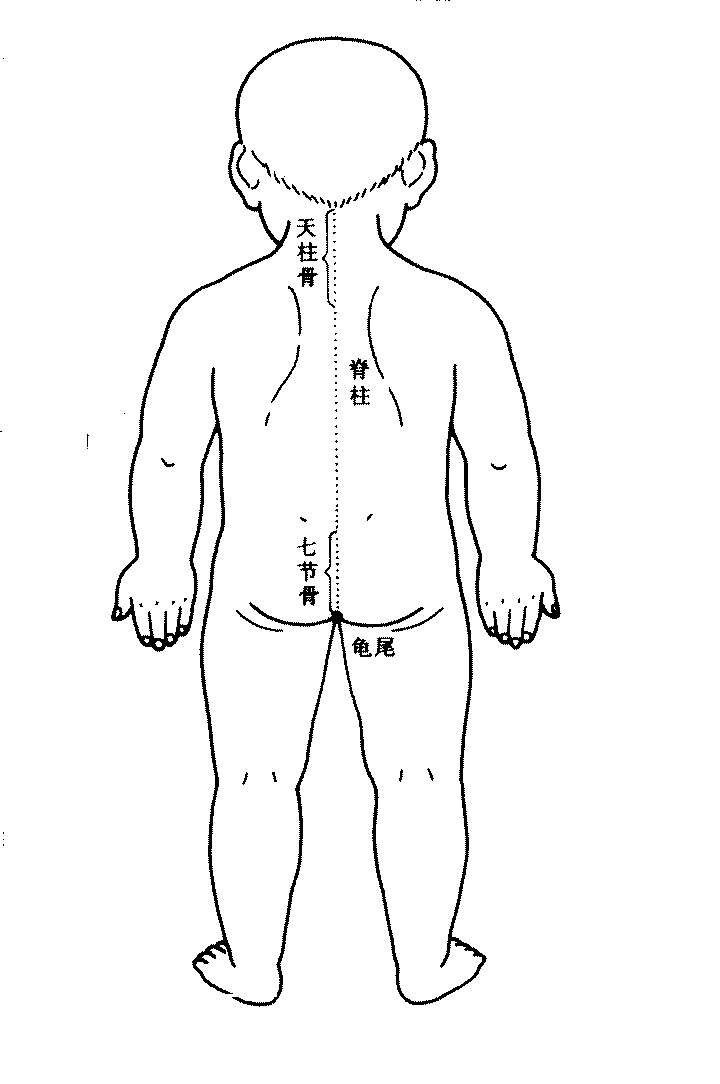

Step Three
Horizontal rubbing at the junction of the head and neck and the junction of the neck and back: The junction of the head and neck is at the back hairline; the junction of the neck and back is at the boundary between the neck and back. Technique: Use the small fish of the palm to rub horizontally at both junctions for 30 seconds to 1 minute.
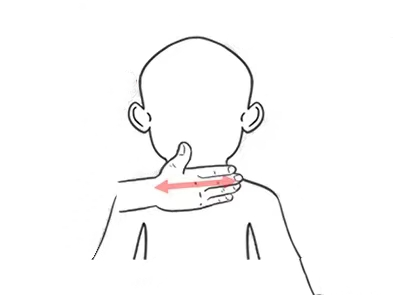
END
Contributed by: Outpatient Center, Zhou Jianming
Edited by: Zheng Xiaotong
Proofread by: Zheng Jinhua
Initial Review: Wu Weiwei
Reviewed by: Deng Huikun
Some images, expressions, and materials are sourced from the internet. If there is any infringement, please contact for removal.
